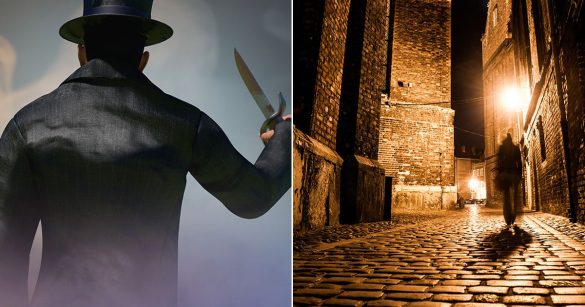It was September 27, 1888 that the name ‘Jack the Ripper’ was first used in an anonymous letter sent to a news agency – 137 years on and the unsolved case still haunts the UK
It was a name that would strike fear into the hearts of Londoners and, 137 years later, still sends a shiver down the spine of the nation. On September 27, 1888, an anonymous letter arrived at the Central News Agency, scrawled in red ink, and signed with a chilling new moniker: Jack the Ripper.
The letter, which began, “Dear Boss, I keep on hearing the police have caught me but they won’t,” was a gruesome taunt. It was the first time the public—and the police—had heard of the killer by the name that would become synonymous with his savage and unsolved crimes.
The author of the letter, who many historians believe was not the real killer, had an unnerving sense of theatre. He promised to “clip the ears” of his next victim, a threat he chillingly carried out on his fourth victim, Catherine Eddowes.
The name “Jack the Ripper” was a chilling brand, an act of calculated self-promotion that catapulted a series of murders into an international sensation. Before the letter, the police were investigating a string of killings in London’s East End. But with the arrival of that infamous note, the man behind the killings had given himself a terrifying identity.
He was no longer just a murderer. He was a theatrical, shadowy figure, a villain straight out of a Victorian horror story.
While police investigated 11 murders in the Whitechapel area, it is the five “canonical” victims who are most widely attributed to the Ripper. These brutal killings, which took place over a period of just over two months, left an indelible mark on the nation’s history.
They were:
Mary Ann “Polly” Nichols
The body of Mary Ann Nichols was found in Buck’s Row, Whitechapel. Her throat was severed with two deep cuts, so severe that her head was almost detached. The killer had also inflicted a deep, jagged wound to her abdomen. She is generally considered to be the first of the Ripper’s victims.
Annie Chapman
Annie Chapman’s mutilated body was discovered in a backyard on Hanbury Street. Her throat had been cut, and her stomach had been slashed open, with her intestines removed and placed over her shoulder. It was this murder that truly ignited the widespread panic in London’s East End.
Elizabeth Stride & Catherine Eddowes (The “double event”)
This shocking night saw two victims killed within hours of each other. Elizabeth Stride’s body was found with her throat cut in Dutfield’s Yard. However, unlike the other victims, her body was not mutilated, leading many to believe the killer was interrupted.
Just 45 minutes later, the body of Catherine Eddowes was discovered in Mitre Square. Her throat had been cut and her face was brutally disfigured. The killer had also removed her kidney and part of her womb, a detail that led to a chilling theory that the murderer had medical knowledge.
Mary Jane Kelly
Mary Jane Kelly was the youngest and the last of the canonical victims. Her murder was by far the most gruesome. Her body was found in her own room in Miller’s Court, horribly mutilated. The killer had spent a considerable amount of time inside with her, suggesting a level of rage and brutality that went beyond the previous attacks.
The victims were all impoverished women, and the brutality of the killings led to widespread speculation that the killer was a doctor or a butcher. Despite a massive manhunt, the identity of Jack the Ripper was never discovered, leaving behind a legacy of fear and one of the world’s most enduring unsolved mysteries.
To this day, the true identity of Jack the Ripper remains one of the world’s greatest cold cases. His crimes have inspired countless books, films, and conspiracy theories. But it all started with a single, brazen letter, a stroke of a pen that turned a killer into a legend.
More than a century later, the mystery of Jack the Ripper continues to haunt us. Was he a surgeon, a local butcher, or someone entirely different? The case may be a relic of a bygone era, but the terror he unleashed and the questions he left behind remain as chilling today as they were on that day in 1888.
#Letter #created #monster #years #Britains #infamous #killer




